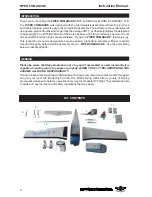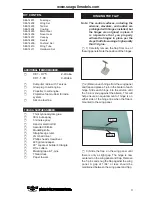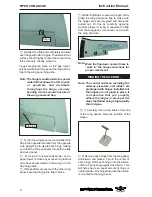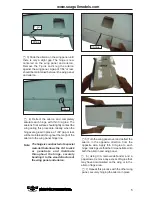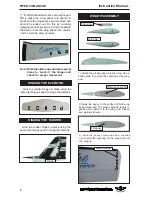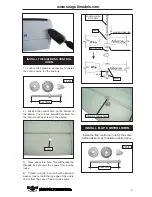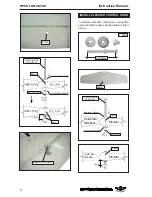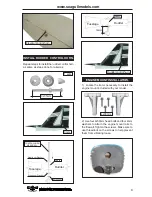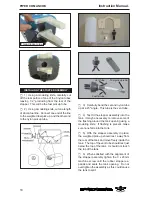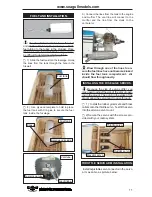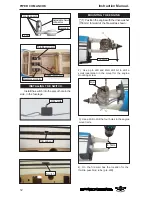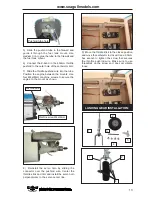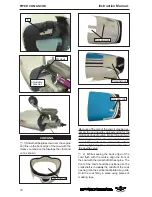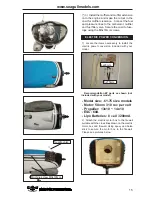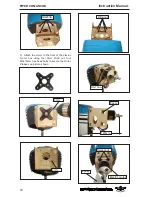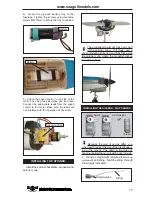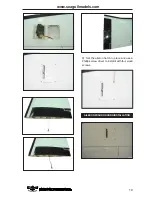
5
www.seagullmodels.com
4) Deflect the aileron and completely
saturate each hinge with thin C/A glue. The
ailerons front surface should lightly contact the
wing during this procedure. Ideally, when the
hinges are glued in place, a 1/64” gap or less
will be maintained throughout the lengh of the
aileron to the wing panel hinge line.
The hinge is constructed of a special
material that allows the C/A to wick
or penetrate and distribute
throughout the hinge, securely
bonding it to the wood structure of
the wing panel and aileron.
Note:
3) Slide the aileron on the wing panel until
there is only a slight gap. The hinge is now
centered on the wing panel and aileron.
Remove the T-pins and snug the aileron
against the wing panel. A gap of 1/64” or less
should be maintained between the wing panel
and aileron.
Hinge.
Hinge.
T-pin.
C/A glue.
6) Using C/A remover/debonder and a
paper towel, remove any excess C/A glue that
may have accumulated on the wing or in the
aileron hinge area.
5) Turn the wing panel over and deflect the
aileron in the opposite direction from the
opposite side. Apply thin C/A glue to each
hinge, making sure that the C/A penetrates into
both the aileron and wing panel.
7) Repeat this process with the other wing
panel, securely hinging the aileron in place.


